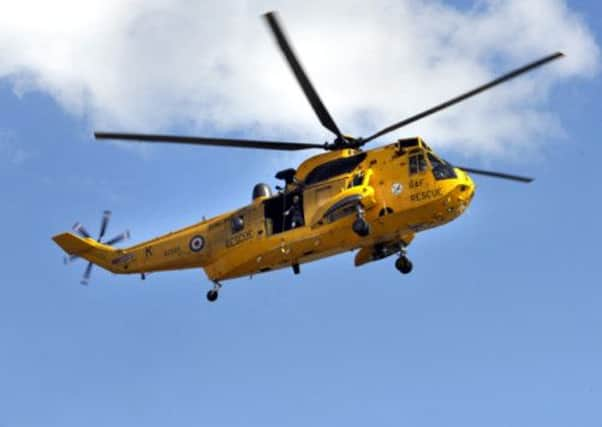Yorkshire chopper had to fly to Wales to rescue Polish seamen


“Technical problems” with four search-and-rescue helicopters at the RAF base where the Duke of Cambridge is stationed delayed the rescue of a crew on a stricken cargo ship.
All four of the helicopters at RAF Valley in Anglesey, North Wales, were unserviceable on the night of April 3 2012, the report from the Marine Accident Investigation Branch (MAIB) said.
Advertisement
Hide AdAdvertisement
Hide AdHelicopter crews from RAF Leconfield in Yorkshire , initially hampered by snowstorms, were “obliged to make an extremely hazardous flight in very poor conditions across the width of the country” to reach the stricken ship, named Carrier, that had run aground off North Wales, the report added.
The MAIB went on: “The rescue was delayed primarily due to the technical problems with all four helicopters at RAF Valley, but also due to the snow storms in northern and central England preventing a helicopter from RAF Leconfield launching immediately.”
The report continued: “The performance of all the helicopter crews was extremely commendable.
“However, the risks they faced during the rescue were exacerbated by the lack of more locally available SAR helicopters.
Advertisement
Hide AdAdvertisement
Hide Ad“It was extremely fortunate that the situation on board Carrier remained stable for long enough to enable all the crew to be rescued without injury.”
The MAIB said that during the latter stages of its investigation, the Department for Transport had agreed a contract with Bristow Helicopters to provide SAR helicopter services for the whole of the UK from 2015.
This will mean the phasing out of the RAF Sea King helicopters and the end of the military’s role in SAR operations.
The MAIB’s report said: “It is hoped that the existing SAR helicopter fleet can provide adequate serviceability until then (2015).”
Advertisement
Hide AdAdvertisement
Hide AdThe Antigua and Barbuda-flagged Carrier ran aground in strong winds and large waves on the North Wales coast, having been loading limestone at Raynes Jetty at Llanddulas.
The vessel was substantially damaged and was declared a “total constructive loss”.
About 33,000 litres of gas oil spilled into the sea.
The report stated:
• RAF staff reported that it was extremely unusual for all four of the RAF Valley helicopters to be unserviceable with such substantial technical faults:
• The Carrier’s master, one of seven Polish nationals who comprised the crew, was not sure of the meaning of some of the words used in UK maritime weather forecasts:
Advertisement
Hide AdAdvertisement
Hide Ad• Jetty staff allowed Carrier to continue loading despite the bad weather conditions:
• None of the staff at the jetty had significant maritime experience:
• “It is concerning that there may be other harbours like Raynes Jetty around the UK coast whose operators consider themselves outside the normal scope of port operations”.
The report added that terminology used in UK maritime weather forecasts “is potentially misleading to non-native mariners”.
The MAIB made a number of recommendations for authorities to address.